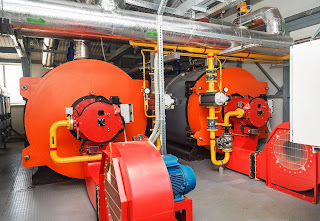 |
| Fuel fired boiler operation can be costly. Maintaining high combustion efficiency returns substantial cost savings. |
There, fortunately, is a single solution that can help to attain useful goals with the three concerns of safety, fuel cost, and regulatory compliance. Applying an efficiency controller to manage the fuel to air ratio of the combustion system will deliver benefits far in excess of the cost to incorporate the necessary devices. The three basic goals for the fuel air controller are:
There are numerous capabilities built in to the company's PPC4000 series of fuel air ratio controllers. Some of the more notable include:
- Maximize fuel efficiency
- Minimize regulated emissions
- Maintain safe operating condition
- Preventing excess fuel vapors from entering the flue and creating an unsafe condition
- Providing the correct amount of air to effectively combust the fuel supplied to the burner
- Preventing excess air flow from reducing net heat transfer to the feedwater
- Maintaining regulated emissions within required limits
- Limiting fuel consumption to the minimum necessary to meet demand
There are numerous capabilities built in to the company's PPC4000 series of fuel air ratio controllers. Some of the more notable include:
- Precise fuel air ratio attained using parallel control of servos to regulate fuel and air supplies.
- User selected burner profiles
- Alarm contacts
- PID operation
- An array of inputs and outputs to accommodate sensors and devices needed to monitor and control boiler operation
- Compatible with other products that provide additional flame and burner monitoring safety
- Multiple boiler sequencing and cold start thermal shock protection
- On board boiler efficiency calculation
- User interface, optional larger touchscreen interface

